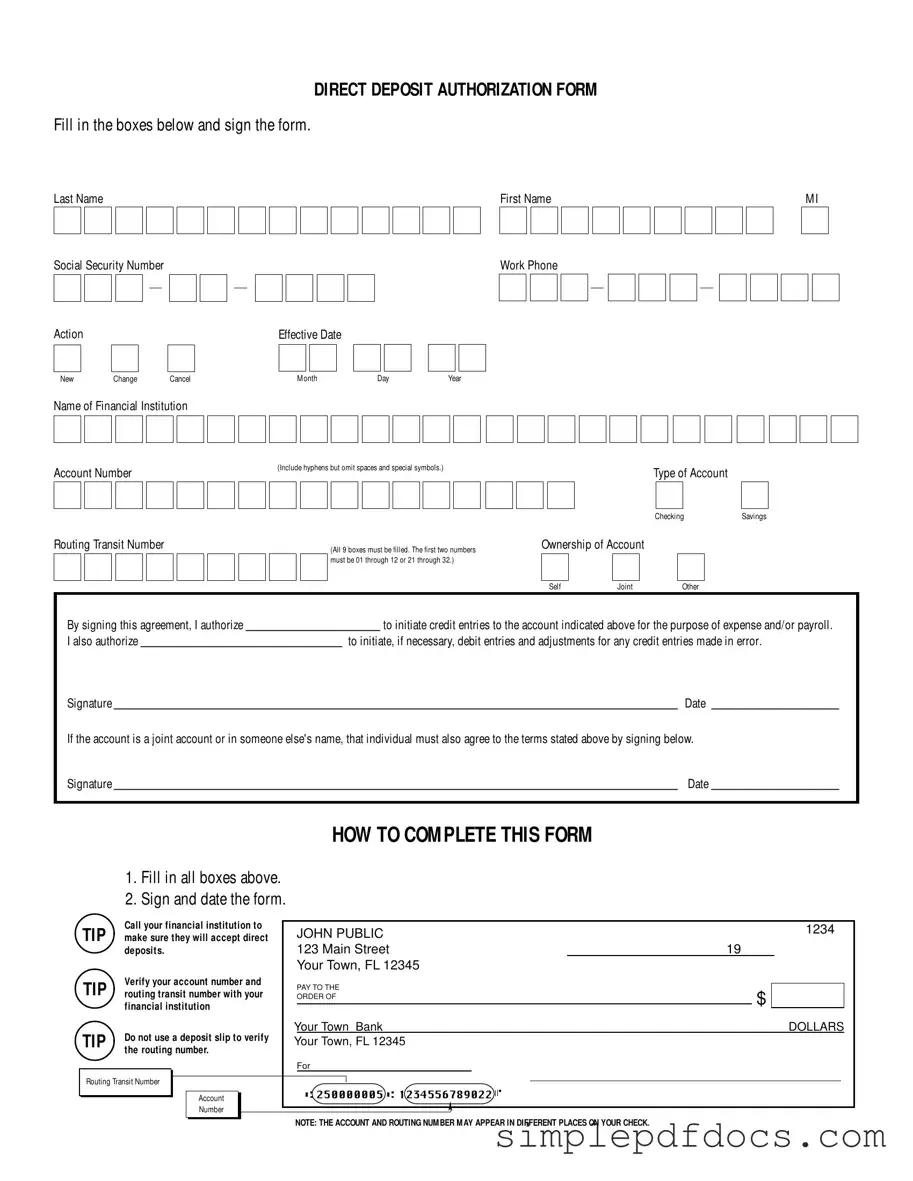Direct deposit has become an essential feature in the modern financial landscape, providing individuals with a convenient way to receive their funds directly into their bank accounts. The Generic Direct Deposit Authorization Form is a critical tool that facilitates this process. This form requires users to provide personal information, including their name, Social Security number, and contact details, ensuring that the financial institution can accurately identify the individual. Users must also specify the action they wish to take—whether it is a new setup, a change to existing information, or a cancellation of direct deposit. Additionally, the form necessitates the inclusion of banking details such as the name of the financial institution, the account number, and the routing transit number. These details are crucial for directing funds accurately and securely. Furthermore, the form includes sections for the account ownership type, whether self, joint, or other, which helps clarify the relationship to the account. Signing the form signifies the individual's authorization for their employer or another entity to initiate credit entries to their account, as well as the ability to correct any errors through debit adjustments. Completing the form correctly is vital, as it ensures that payments are processed without delay. Clear instructions guide users through the completion process, emphasizing the importance of verifying account information with the financial institution to avoid mistakes. Overall, this form streamlines the direct deposit process, making it easier for individuals to manage their finances efficiently.
